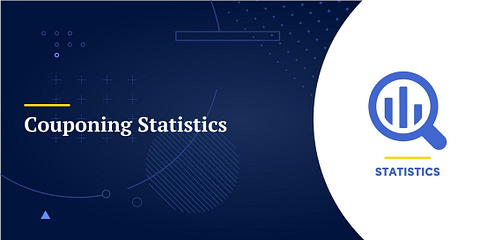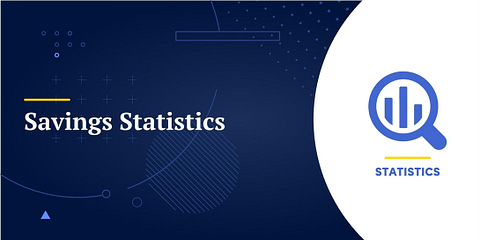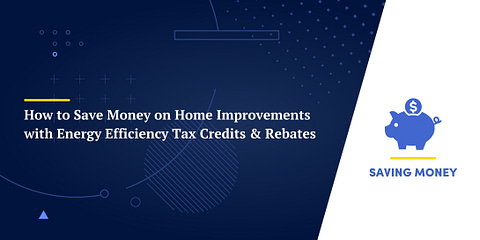Saving money is a great way to hedge yourself against financial calamities like job layoffs or unexpected major expenses. A well-padded emergency fund can mean the difference between coming through a financial emergency fairly unscathed or financial ruin. A savings account can let you enjoy the luxuries you want without going into debt. Your savings can even start off a retirement plan. Saving is one of the keys to financial independence, and it’s important for everyone. But if saving money is such a good thing, why are Americans bad at saving money?
You’ve probably seen reports and heard rumors about the falling savings rates of American citizens. Are Americans really that bad at saving money? Let’s look at how Americans are building their savings and how we can do better.
American Savings Rates: A History
Here’s a snapshot of American personal savings rate averages since the 1960s.
| Year | Avg. Savings Rate |
|---|---|
| 1959 | 10.3% |
| 1969 | 10.9% |
| 1979 | 10.3% |
| 1989 | 8.4% |
| 1999 | 5% |
| 2009 | 6.1% |
| 2019 | 7.5% |
Source: Bureau of Economic Analysis, NIPA Tables
As you can see, the savings rates of Americans fluctuate during the years, as you’d expect. The overall trend is still toward lower rates of personal savings.
US Personal Saving Rate 1929-2019
📈 Go to the full page to view the chart.
Source: Bureau of Economic Analysis, NIPA Tables
One exception to that rule was an astronomically high monthly savings rate when news of the coronavirus COVID-19 broke. In April of 2020, Americans reported saving a whopping average of 33.6 percent of their income. It seems Americans had a lucid moment when they realized the importance of saving money. That rate has since steadily declined and was down to 14.3 percent in September of 2020. Even at 14.3 percent Americans are saving often double or more what they have been saving in the past thirty years.
American Savings Compared to Other Developed Countries
How does the American savings rate stand up against the savings rates of similar countries? Let’s take a look. Here are some recent savings rates (between 2016 and 2020) of other developed countries compared to the United States.
| Location | Year | Household savings* |
|---|---|---|
| United States | 2019 | 7.96% |
| Canada | 2018 | 2.51% |
| Australia | 2018 | 10.26% |
| United Kingdom | 2018 | 0.74% |
| Ireland | 2018 | 7.51% |
| Sweden | 2018 | 16.02% |
| France | 2018 | 9.11% |
| Germany | 2018 | 10.86% |
| Netherlands | 2019 | 9.12% |
| Russia | 2019 | 7.35% |
| Japan | 2019 | 4.29% |
| Mexico | 2019 | 10.82% |
| Euro area | 2018 | 6.47% |
*Total, % of household disposable income OECD Most recent reported data. Source: OECD (2020), Household savings (indicator). https://data.oecd.org/hha/household-savings.htm (Accessed on 07 December 2020)
As you can see, America ranks far below almost every other country mentioned here. Many other countries have savings rates that are double or more of what Americans are saving.
What factors cause the dismal savings rates of Americans?
Why Are Americans So Bad at Saving Money?
A recent study by the Financial Health Network[1] found that 70 percent of Americans were struggling financially in some way, even in November of 2019 when the USA was graced with record low unemployment rates and a booming economy.
Another survey in that same article found that nearly 20 percent of Americans making between $30,000 and $100,000 per year spent more than they earned. That is probably an understandable statistic for those earning on the lower end of that spectrum. Housing prices are high and so are other costs. That doesn’t fully explain why even people at the higher end of that spectrum routinely spend more than they earn.
There are several factors that could account for low savings rates among higher-income Americans.
🏦 Borrowing Money is Easy
It’s very easy to get a loan or credit card. Banks, loan companies, and credit card companies advertise everywhere from Facebook pages to television to direct mail. Even if you’ve got a credit history marked with late payments and too much debt, you can probably get another loan or credit card. You might have to pay a higher interest rate, but many people find it worth it if they can spend now and pay for it later.
👨👩👧👦 Keeping up with the Joneses
There’s a saying that defines those who want to have all of the same (or better) possessions that their neighbors have: Keeping up with the Joneses. Television and the internet constantly advertise the next biggest thing, whether it’s designer clothing, the newest car, or the latest vacation hot spot. That’s what good marketing is all about, and that type of marketing can make it tough for people to say “no” to spending money.
💳 The Cashless Society
There’s another reason Americans struggle to save money: The cashless society. Americans pay for nearly everything with a debit or credit card and that can affect their spending.
Studies have shown that people are willing to spend up to 83% more when using a credit card to pay for their purchase[2]. If you don’t believe it, try this experiment. Spend a few weeks paying for everything you can by cash. Take cash out of your checking account and see if you can notice the difference in how it feels when that cash leaves your hand. See if spending cash feels different than swiping a debit or credit card.
Most people find that it’s much tougher to let go of cash than it is to swipe a debit or credit card on a machine. Purchases made with a debit or credit card just don’t feel like spending real money.
Purchases made with plastic do spend real money. We’re not just spending more on purchases, either. People who don’t pay their cards off in full every month are also paying interest on their credit card balances, often at rates as high as 20% or more.
How Can Americans Save More Money?
So how can Americans catch up to other countries and increase their savings rates? Here are some ideas.
- Make a Budget and Stick to It. Decide what you have to spend on concrete expenses and what you need to spend on fluid expenses such as groceries. Determine what you’re willing to spend on each item, and stick to your budget.
⚡️ Making a budget just got easier! Use our online Budget Calculator to work out how much money you have coming in and what you’re spending it on.
- Include a Savings Line Item in Your Budget. Financial experts recommend including a line item in your budget specifically for savings. In other words, treat your savings like a bill, and pay yourself first.
- Start Using Cash. Use cash to pay for daily expenses. Cash will feel different as it leaves your hands, and that different feeling might encourage you to spend less and save more.
- Think About Your Financial Goals. Take the time to think about your financial goals. Do those nickel and dime expenditures that shatter your savings rate really bring joy to your life? Are they worth it? Or would it bring more value to your life to spend less, save more, and get out of debt? Only you can decide the answer to that question, but it’s a question worth considering.
- Save More by Earning More Income. Another way for Americans to increase their savings rates is to earn more money. Sign up for overtime hours at work. Pick up a second job. Start a side hustle like mowing lawns, pet sitting, or cleaning houses.
☝️ Changing your habits to save more money might not be easy for you, but it is possible. Follow the tips above to help pad your savings account and get more control over your money.
It’s clear that American savings rates are far below those of other countries, and lower than American savings rates once were. Not everyone is in a position to save more, but with a bit of planning, most of us could.
Saving comes down to earning more, spending less, and taking good care of any money you have left after your essential spending. It’s not always easy, but with discipline and work it’s usually possible.
























